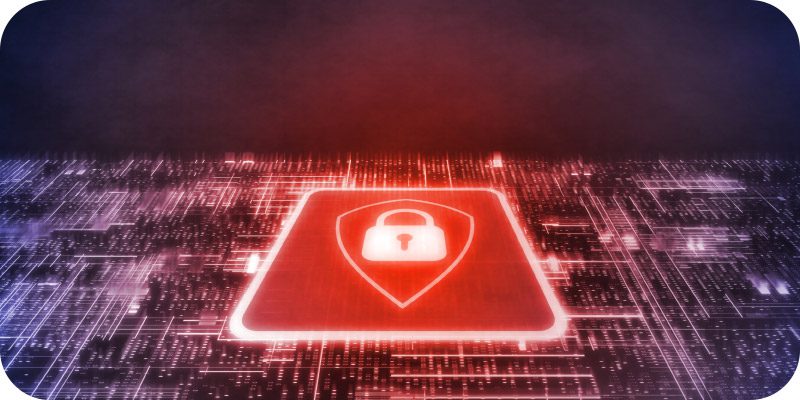Why Cybercriminals Are Targeting Your Backups and How to Be Prepared


Most organizations believe they’re prepared for ransomware attacks with a simple strategy: maintain good backups and use them to restore systems if cybercriminals encrypt their data. However, there’s a dangerous flaw in this approach that many overlook – attackers are increasingly targeting backup systems themselves, leaving organizations with no path to recovery.
This trend is becoming alarmingly common. Recent research from IDC reveals that in 2023, more than half of all ransomware attacks included attempts to compromise backup systems. Even more concerning, these attempts succeeded 60% of the time.
Understanding the Evolution of Ransomware Attacks
Traditional ransomware attacks focused on encrypting active production data – the information businesses use daily in their operations or, “live data”, such as customer databases, financial records, and email systems. When this data becomes encrypted, operations grind to a halt, pressuring organizations to pay the ransom to regain access.
However, companies began to make their backup strategies even more robust and have long served as an effective countermeasure. With recent, accessible backups, organizations could restore their systems without paying the ransom. However, this led cybercriminals to adapt their tactics. They began orchestrating long-term infiltrations specifically designed to compromise both production systems and backup infrastructure simultaneously. Their new objective became clear: render an organization’s entire safety net useless, leaving them with no choice but to pay the ransom or face catastrophic data loss.
Common Attack Methods on Backup Systems
Before launching their attacks, malicious actors are certainly smart about it. They often employ a “low and slow” approach, choosing to remain undetected within a company’s networks for weeks or even months. This gives them time to map out the entire backup infrastructure, including scheduled backup times, retention policies, storage locations, and access patterns. They can potentially see which administrators have access to which systems, monitor backup software configurations, and identify potential vulnerabilities in the backup chain.
This patient approach allows attackers to develop highly targeted strategies that can simultaneously compromise both production data and backup systems when they finally strike, maximizing the impact of their attack and the likelihood of ransom payment.
Cybercriminals employ various sophisticated techniques to initially compromise systems:
1. Administrative Credential Theft: Using stolen login information from IT staff to access and delete backups
2. Deceptive Social Engineering: Manipulating employees through sophisticated phishing schemes to compromise backup systems
3. Backup Software Vulnerabilities: Exploiting security weaknesses in backup tools
4. Storage System Breaches: Targeting the infrastructure where backups reside
Keep in mind, attackers don’t need to destroy all backup data to succeed. Even partial corruption can force organizations to pay the ransom, especially when facing pressure to restore operations quickly.
Assessing Your Backup Vulnerability
Several key factors influence how susceptible your backups are to attack:
- The physical and logical separation between your production and backup environments.
- How easy it is to identify your backup storage locations.
- The effectiveness of your employee training against social engineering.
- How often patch updates are implemented and security holes are scanned.
- The implementation of advanced authentication methods like Multi-Factor Authentication (MFA) and the Principle of Least Privilege (POLP) on backup systems.
And perhaps most importantly…
- How robust your backup and disaster recovery strategy is and whether your Recovery Time Objective (RTO) and Recovery Point Objective (RPO) are optimized to minimize downtime and data loss.
Why Traditional Security Isn’t Enough
There is no doubt IT teams are working tirelessly – without a coffee break and even over the weekend to update their systems and run threat detection software. But modern cybercriminals have demonstrated their ability to bypass even the most advanced security measures. The question isn’t just about preventing attacks – it’s about maintaining operational continuity when they occur. This requires a shift in thinking: from prevention-only to prevention-plus-recovery.
Seven Critical Components of a Resilient Backup Strategy
Attackers have realized that compromising both production and backup data creates maximum leverage. When organizations lose access to both their current data and their backups, they face an impossible choice: pay the ransom or lose everything.
To maintain a business continuity plan, which goes beyond layered threat detection, here are seven strategies your IT team can implement immediately to ensure you have a healthy, immediate failover once a malicious infiltration has occurred.
1. Automated Recovery Testing
Gone are the days of manual backup testing. All businesses must have automated recovery drills integrated into their regular operations. These tests should verify not just data integrity, but the complete restoration of network configurations and system settings. Each test generates detailed audit trails, providing both compliance documentation and security validation. This automated approach not only ensures consistent testing procedures, it reduces the risk of human error and saves an enormous amount of time for backup IT admins.
2. Strategic Air-Gapping
Air-gapping has evolved beyond simple offline storage solutions. Businesses on the cloud need modern air-gapping solutions enable rapid restoration capabilities while maintaining critical data isolation. That means if you are only one cloud provider, implementing systems that can fail over immediately from any region or account. If you run a Multicloud environment, companies are beginning to ensure backup data remains completely segregated from production environments using cross-cloud air-gapping. Which brings us to…
3. Multi-Cloud Architecture
A distributed backup ecosystem provides essential protection against both targeted attacks and systemic failures. Businesses should spread their backup infrastructure across multiple cloud providers, using distinct authentication systems and separate environmental controls. This approach ensures that a compromise in one environment doesn’t cascade into others, while maintaining rapid recovery capabilities from any location.
4. Advanced Encryption Protocols
Modern backup encryption must protect data at multiple levels. This means securing not just the backup content itself, but also implementing sophisticated key management systems kept entirely separate from the backup infrastructure. Advanced encryption protocols prevent unauthorized users from even identifying backup locations, adding an essential layer of security through obscurity while maintaining full recoverability for authorized users.
5. Immutable Storage Implementation
Creating truly unchangeable backups requires more than just write protection. Modern immutable storage systems combine write-once-read-many technologies with sophisticated retention policies and integrity guarantees. This ensures that backup data remains pristine regardless of potential security breaches or accidental modifications. The system must maintain backup integrity while still enabling rapid recovery when needed.
6. Enhanced Access Controls
Access management for backup systems requires sophisticated role-based controls integrated with multi-factor authentication. Businesses must implement separate credential systems for backup access, maintaining detailed audit trails of all interactions with backup systems. This creates a secure environment where backup integrity is maintained without compromising recovery capabilities.
7. Cost-Effective Data Lifecycle Strategies
Rather than simply creating multiple copies of data, businesses need to implement intelligent redundancy strategies. This means developing sophisticated tiering systems that automatically store data based on age, importance, and recovery requirements. However, many companies shy away from this due to storage cost concerns.
Backup costs can be greatly optimized while maintaining security through intelligent data management. Modern solutions automatically transition incremental backups to lower-cost storage tiers while keeping them readily accessible. By only keeping the change in your last backup and utilizing a smart archiving approach, companies can significantly reduce storage costs without compromising security or recovery capabilities.
(Tip. most cloud providers store full backups and lack optimal tiering leading to unnecessarily high expenses).
Looking Ahead: The Role of Automation
As cyber threats continue to evolve, companies in every sector must maintain backup strategies that are both robust and adaptable. The focus should be on creating systems that not only protect data but ensure business continuity under any circumstances. Because the ability to recover quickly and completely isn’t just about security – it’s about maintaining the trust that forms the foundation of your customer relationships.
Automation has transformed backup management from a manual process into a sophisticated, self-managing system. Modern tools handle everything from routine backups to complex multi-cloud management, reducing human error and empowering backup IT admins. Companies and IT teams that embrace these advanced approaches and tools will be best positioned to maintain operations regardless of the challenges they face.


















